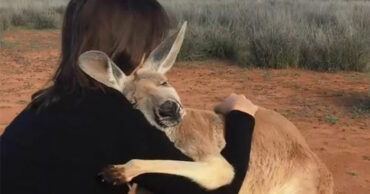All Quiet on the Western Front is a 2022 anti-war film based on Erich Maria Remarque’s novel “Im Westen nicht Neues (There is nothing new in the West).” It follows Paul Bäumer on the battlefield of World War I while peace negotiations were taking place. The film also went on to win Best International Feature Film, Best Original Score, Best Production Design, and Best Cinematography at the 95th Academy Awards.
However, what else does the movie offer alongside its war themes? This article will analyze the film on its historic value as well as how well it impacted its audience. Moreover, it will go on the underlying messages of the film that are hidden behind its cinematography and its characters.
Historical Content

All Quiet on the Western Front was about the closing moments of the First World War. It portrayed the struggles of trench soldiers on and off battle. The movie had a few good points, but took creative liberties for cinematic appeal. It was on the Western Front that Germany began using gas as a war weapon. Hence, why they were wearing gas masks in the early movie.
Dog tags were also used on the German soldiers, which Paul would be seen collecting. The concept of those tags was to identify the fallen. It was broken in half, a half is to be sent to the family of the fallen, while the other stayed with the corpse for identification purposes. A notable inaccuracy in the film was the reaction to tanks. It seemed that the Germans were afraid of the tanks. However, tanks were introduced on the Western Front in the Somme in 1916, a year before the events of the movie took place, so they were would not have been strangers to tanks.
Cinematography

All is Quiet on the Western Front was designed to take its viewers into a nearly virtual experience of what wars in the trenches must have been like from 1917 to 1918. This great cinematography was most notably presented in the film’s visual and auditory elements. As mentioned earlier, the movie wanted to take its viewers to war, as close as possible – literally and figuratively. In some scenes, the camera acted as Paul’s eyesight, taking the viewers into what the latter saw, and making them experience the emotions he felt.
Aside from the camera acting as someone’s line of sight, another camerawork that was appreciated was the use of shaky movements to capture the chaos of war. If there was an explosion, the camera shook with the crumbling structures. The camera shaking made the viewers feel the confusion and the fear the soldiers on the ground were experiencing.
What the viewers heard during the film also played a pivotal role in its success. In war, there is no background music, only the sound of disaster and the anguishes it causes. All Quiet on the Western Front made the viewers experience the pain of those soldiers by letting them hear their screams as they fell, letting them hear what the soldiers during World War I heard, and making them acknowledge how distressing it had been to balance all that chaos. It is no wonder All Quiet on the Western Front won the Best Cinematography Award at the 2023 Oscars.
The Emotional Depth of All Quiet on the Western Front

The stark contrast between Friedrich’s world and the war zone displayed how the higher-ups regard their soldiers as mere pawns in battle. If someone died in battle, they were easily replaced. This mirrors an unfair reality that exists even today. Tjaden’s suicide went to show that some who survived the war would lose the will to live after it. Tjaden preferred to die painfully, rather than live the rest of his life crippled and probably sent to another war in the future. With no interest in living anymore, he ended his life painfully.
Paul Bäumer, among many others, was the characterization of those who fell in love with the romantic idea of war. He was enticed by the promise of glory, only realizing too late that the promise of glory was a dream only a few would live long enough to obtain. Like most of the soldiers, he was made to fight his fellow human beings, viewing them as not real humans but threats that should be eradicated.
The crater scene could have been singlehandedly the most tear-jerking moment of the movie. It was when Paul stabbed a French soldier, then silencing him with a handful of dirt to his mouth. Then, looking at the French soldier’s papers, he realized that, like him, the French soldier also had a family, a home, and a story – which he had just cut short. The realization that who he had just killed was no different from him was harrowing. Paul realized that he just effectively killed the hopes and dreams of a family. Understanding the gravity of his deed, he apologized to the man in French (Je suis désolé), making sure that he was understood.
The final death in the movie was also jarring. However, it was meant to depict that in war, all things were sudden, and all deaths were unnecessary. All Quiet on the Western Front ended tragically like many of the lives of the fallen of war.
 Follow Us
Follow Us





